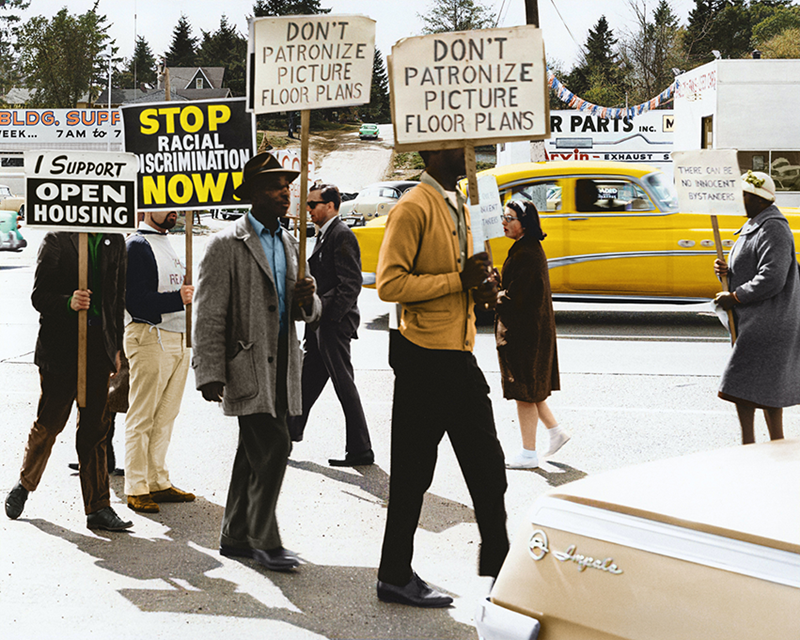The Impact of Redlining and Racism on Cancer Care
Health disparities work has highlighted inequities in cancer screening, access to therapies, and financial toxicities, among other areas. With an understanding of the current problems, work now focuses on identifying root causes on the pathways to inequity to build tangible solutions that improve the access and quality of care delivered to minoritized patients. There is a growing body of literature on the impact of structural racism and neighborhood factors such as segregation, housing stability and quality, and mortgage discrimination (redlining) on health care outcomes.
Redlining has long impacted minority communities, particularly Black communities. Restrictive policies from the 1930s required that new suburban homes not be sold to people of color, and a Federal Housing Administration policy led to a refusal to insure mortgages in and near Black communities based on a principle that “incompatible racial groups should not be permitted to live in the same communities.” With an inability to own a home outside of a designated area or to obtain a mortgage to buy a home in their communities, people of color were forced to rent properties in urban areas that lacked appropriate investment in infrastructure from government agencies and regulations for landlords.
The forced segregation into underfunded neighborhoods perpetuated pre-existing discrimination and led to poor quality housing, lack of investment in neighborhood schools, and decreased social services and public works. Decreased rates of home ownership and high turnover among residents in a neighborhood also lead to less resident concern about improvements in the area; there is pride in owning and maintaining a home and the neighborhood where you anticipate living for a long time. Those able to buy homes in the early to mid-1900s developed generational wealth from these low-cost investments that have increased in value in unimaginable ways. As evidenced, the sequelae of redlining extend beyond a mortgage application and impact the continued daily function of neighborhoods that operate with a century-long disadvantage that is not easily resolved.
discrimination and led to poor quality housing, lack of investment in neighborhood schools, and decreased social services and public works. Decreased rates of home ownership and high turnover among residents in a neighborhood also lead to less resident concern about improvements in the area; there is pride in owning and maintaining a home and the neighborhood where you anticipate living for a long time. Those able to buy homes in the early to mid-1900s developed generational wealth from these low-cost investments that have increased in value in unimaginable ways. As evidenced, the sequelae of redlining extend beyond a mortgage application and impact the continued daily function of neighborhoods that operate with a century-long disadvantage that is not easily resolved.
This problem also leads to differential health outcomes and negatively impacts the wellbeing of those residing in redlined areas. Within breast cancer, women in historically redlined areas are less likely to undergo surgical resection, and contemporary redlining is associated with poorer breast-cancer survival among older women in the United States. Our recent presentation at the 2023 ASTRO Annual Meeting described the decreased receipt of guideline-compliant care among women with breast cancer who resided in redlined areas, even after controlling for dual enrollment, race, cancer-related factors, and medical comorbidities.1 Systematic racism has profound impacts on health.
More work is needed, however, to understand the factors that mediate the relationship between redlining and both receipt of guideline-compliant care and survival. Focusing on neighborhood factors including landlord regulations, pathways to home ownership, financial and structural investment into neighborhoods, expansion of social services, programming to update outdated or abandoned houses, and other measures, through partnerships with government organizations and community leaders, is essential for health care workers. Ignoring the profound impact of a patient’s living arrangements on their overall life and therefore oncologic care, places a narrow lens on health outcomes and may prevent our society from reaching the imperative goal of health equity for all.
Ignoring the profound impact of a patient’s living arrangements on their overall life and therefore oncologic care, places a narrow lens on health outcomes and may prevent our society from reaching the imperative goal of health equity for all.
ADVERTISEMENT
In addition to systematic factors, interpersonal racism has been long known to impact health care delivery and outcomes, a finding additionally demonstrated in our study. For instance, Black women were less likely to receive guideline-compliant care. Though self-reported race as a variable encompasses both genetic ancestry, which contributes to differences in tumor biology and survival, and experiences with interpersonal racism, there is no plausible reason as to why the genetic components would impact receipt of guideline-compliant care. Thus, the latter likely drives these disparities.
In radiation oncology, the lack of workforce diversity has led to an expansion of existing pathway programs with the goal of increasing the number of historically excluded individuals in our field. Minoritized patients are more likely to have negative care experiences and feel that the health system treats them unfairly when compared to White patients. These outcomes are improved with racial concordance between patients and their treating physicians, highlighting one of many benefits to increased diversity among radiation oncologists.
While these programs are ongoing and require an investment of time, resources, mentorship, and other component, also essential is a focus on implicit bias training as well as training about the impacts of systematic racism, social determinants of health, and the factors outside of clinical oncology that impact patients day in and day out. As oncologists, it’s important that we acknowledge and understand the combined impacts of interpersonal and systematic racism and remain conscious of the roles these play in the lives of our patients and in our clinical practice.
Though reaching health equity requires a multitude of individuals investing in systems improvements, small steps can have big impacts. Adding more discussions about housing, needed resources, and nonclinical impacts on treatment can help improve understanding of current issues and build support systems to help patients navigate their care. These can also aid in discussions with community and legislative leaders who have the ability to change policies and direct investments into areas with problems. This, however, requires physicians to advocate in spheres outside of medicine.
There is some responsibility among those whose primary mission is to care for others to extend that care to improve life outside of clinic. No two aspects of one’s life are in complete isolation, and it is unrealistic to anticipate that we can change health outcomes without changing communities, access to resources and education, and the biased legislature that keeps those residing in redlined areas from achieving upward economic mobility. Thus, it is essential for physicians and others in hospital systems to be active participants in their communities, develop an understanding of the current socioeconomic inequities that impact patients in their catchment areas, and uplift those from minoritized backgrounds through mentorship and sponsorship in oncologic fields.
Acknowledgment: The author thanks Crystal Seldon-Taswell, MD, for her review of this blog.
Reference
- Beltrán Ponce SE, Canales B, McGinley, et al. Characterizing the impact of race and redlining on receipt of guideline-compliant locoregional therapy among older women with breast cancer. Poster presented at: ASTRO Annual Meeting; October 1-4, 2023; San Diego, CA.

Sara Beltrán Ponce, MD
Sara Beltrán Ponce, MD, is a PGY5 resident physician, Department of Radiation Oncology, Medical College of Wisconsin, and chair, Society for Women in Radiation Oncology.